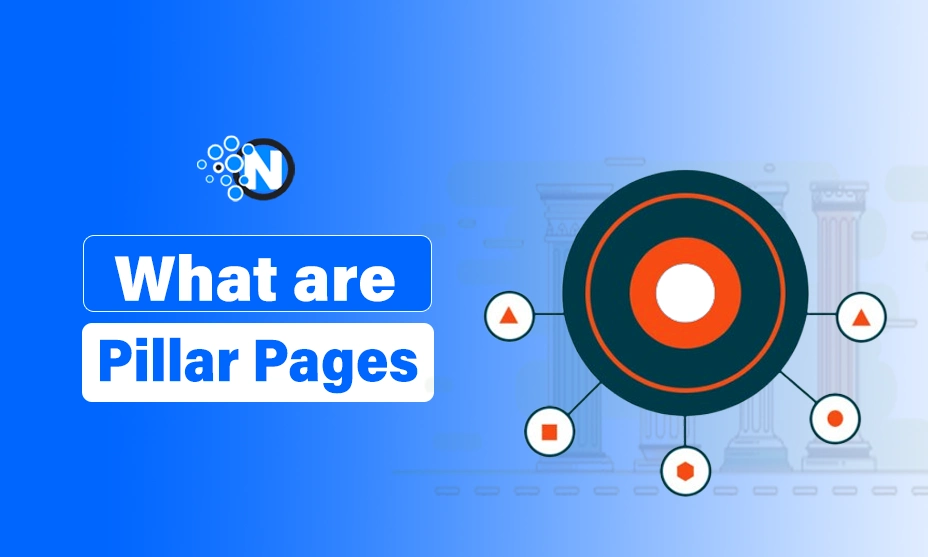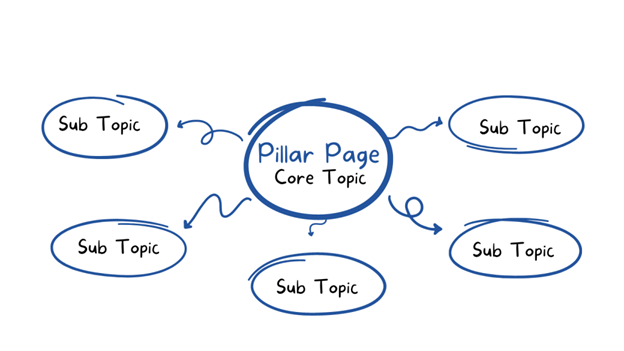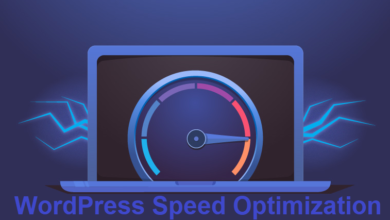
Any effective digital marketing plan needs high-quality content. According to SEJ, SEO success depends on delivering high-quality content.
High-quality content can improve your website’s search engine rankings, attract more visitors, and build loyalty and trust among your target audience. Reaching your objectives can be greatly aided by content that expresses your message clearly, connects with readers, and stands out from the competitors.
Creating pillar pages is one of the best ways to optimize your blog or website with high-quality content that attracts more visitors and turns them into leads and customers.
In this blog post, I have explained the pillar pages and discussed how they improve SEO efforts.
Let’s dive in!
What are Pillar Pages?
A pillar page is an extensive webpage that acts as a reliable resource on a certain topic or subject. It covers all the important details to know about that subject, as well as a number of related subtopics.
Its easy-to-navigate organization helps readers understand the main ideas and pertinent details. A pillar page’s objective is to offer the most thorough reference on a particular topic so that visitors can locate the information more simply and quickly they need.
Let’s take the topic ”How to Start a Blog” for example!
It was the idea of the founder of this blog Fawad Malik, and he created this detailed guide first.
Then, he collaborated with the content writing team and asked them to cover related topics like:
- Choosing the right web hosting provider for a blog
- Tips for choosing the best blogging platform
- Best WordPress themes for blogs
- Types of blog posts to drive more traffic
- Blog content writing tips
- Tips for writing SEO friendly blog posts
- Best blogging tools for success
- Best SEO tools for blogs
- How to become a successful blogger
- Common guest blogging mistakes to avoid
After completing the task, all the posts are linked to the pillar page for better user navigation and ease.

Importance of Pillar Pages
An integral component of any SEO strategy is pillar pages. They serve as the framework for the content on your website, making it easier for users to find the information they need. These pages usually provide extensive, in-depth information on a wide range of topics related to your company or industry. They serve as a point of entry for users to find more specialised, relevant and informative content.
Search engines can better understand the topic matter on your website by using pillar pages. You can build an internal link structure that aids Google and other search engines in more precisely indexing your website and prioritizing pages in the SERPs by connecting related content to a pillar page.
How Pillar Pages Improve Your SEO?
One of the best methods to increase the organic visibility and reach of your website is through pillar pages. Building clusters of related information around a single subject can improve search engine rankings and establish the resource as authoritative. The use of pillar pages for SEO and content marketing has the following five advantages:
1. Boost SEO
Using pillar pages can help you reach your target audience and improve search engine optimization. They give a subject’s related topics a structured way to be arranged, which facilitates the finding and display of relevant content by Google and other search engines.
Structuring your content into pillar pages enhances its visibility and search engine ranking by ensuring all content is correctly indexed. This technique makes it easier to locate and arrange your content for optimal effect.
Additionally, pillar pages offer a fantastic way to focus on several keywords and raise your blog’s or website’s search engine visibility. You may build a highly relevant subject cluster that will help increase organic traffic and your website’s rankings by constructing content clusters around your pillar page.
2. Increased Traffic
Pillar pages can also help increase organic traffic because they provide a wealth of information on specific topics, making them ideal landing pages for visitors looking for detailed information.
Additionally, they are link-building resources since they contain multiple links to other relevant content within your website or blog. When you’ve created multiple pieces of content related to the topic, visitors can easily discover more relevant content and explore further to stay longer on your website.
3. Brand Visibility & Authority
Pillar pages offer a great way for businesses to establish themselves as an authority in their industry and demonstrate expertise. Brand credibility, customer education, and insightful analysis are all bolstered by pillar pages, which offer in-depth information on a certain subject.
As you create a more comprehensive resource on a given topic, your brand will be seen as an authority in that space. This increased visibility will improve brand recognition, trustworthiness and loyalty to search engines and users.
4. Better Content Creation
Pillar pages provide an effective way to create quality content and ensure that it is organized in such a way that it is easily accessible to readers. The use of pillar pages can help simplify the process of creating content for writers by breaking down information into smaller, more manageable pieces.
Using pillar pages, content is organized into specific topics that can be expanded upon with additional content. This helps to provide a foundation of knowledge that writers can draw from and use to create more detailed writing pieces.
5. Improved User Experience
Pillar pages make it easier for users to find what they want. With an organized and comprehensive view of the topic, users can effortlessly navigate through the content and locate the information they require without the need to search through numerous pages.
Crafting a Compelling Pillar Page – Key Elements
Now that you understand the power of pillar pages, let’s discuss how to craft them for maximum impact:
1. Choosing the Right Topic: Select a broad topic relevant to your niche and target audience. Do proper keyword research to identify terms with high search volume and low competition.
2. Comprehensiveness: Aim to create a truly informative piece. While the specific length can vary, pillar pages are generally longer than typical blog posts, ranging from 2,000 to 5,000 words or more. Cover the core aspects of the topic, ensuring it’s informative and valuable to the reader.
3. Structure and User Experience: Break down your content into digestible sections using clear headings, subheadings, and bullet points. Employ visuals like infographics, charts, and high-quality images to enhance user engagement.
4. Internal Linking: Strategically link to related, in-depth content pieces (cluster content) that delve deeper into specific subtopics. This creates a strong internal linking structure and guides users through a well-organized information hierarchy.
5. SEO Optimization: Don’t forget to optimize your pillar page for relevant keywords. However, prioritize user experience and avoid keyword stuffing. Integrate your target keywords naturally throughout the content, including the title, meta description, headings, and image alt tags.
6. Promote Your Pillar Page: Promote it across your social media channels, include it in your email newsletters, and consider paid advertising strategies to increase its visibility.
Pillar Pages vs. Cluster Content
Understanding the connection between pillar pages and topic or keyword clusters is important. Pillar pages offer a thorough summary of a central topic, while cluster content delves into specific subtopics associated with the central topic.
The linking strategy between the pillar page and cluster content creates a unified structure that improves SEO performance.
Measuring the Success of Pillar Pages
To determine the effectiveness of your pillar pages, keep track of the following metrics:
Organic Traffic: Monitor the gradual rise of organic traffic to the pillar page as time passes.
Search Engine Rankings: It’s important to monitor the ranking of your webpage for important keywords in search engine results pages (SERPs).
Engagement Metrics: Analyze metrics like time on page, bounce rate, and click-through rate to gauge user engagement.
Conversion Rates: Measure the number of conversions or desired actions taken by users after visiting the pillar page.
Backlinks: Monitor the number and quality of backlinks pointing to the pillar page, as they indicate its authority and relevance.
Final Thoughts
SEO and content marketing strategy must include pillar pages. These are thorough manuals that improve search engine rankings, user experience, and domain authority.
Creating engaging, search engine-optimized pillar pages can help businesses showcase their domain expertise, generate organic traffic, and achieve their marketing goals. Long-term cost savings and increased online visibility will result from doing this for your website.




